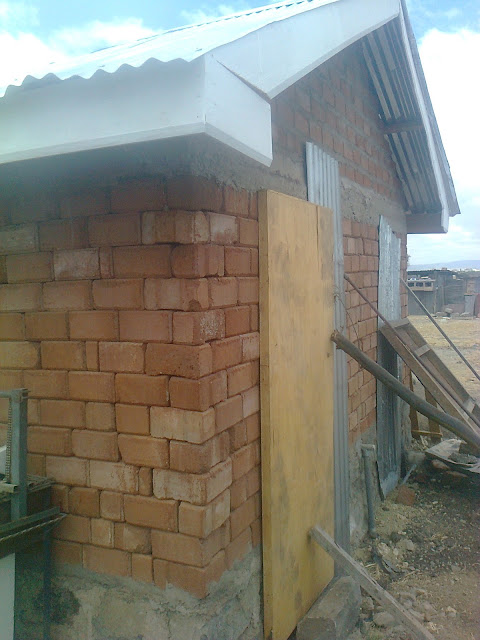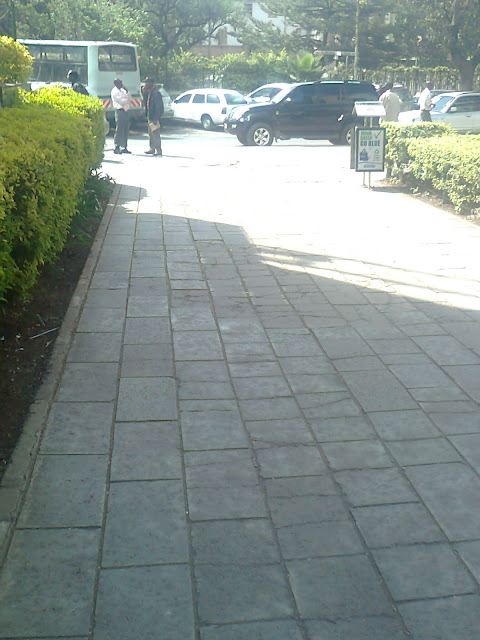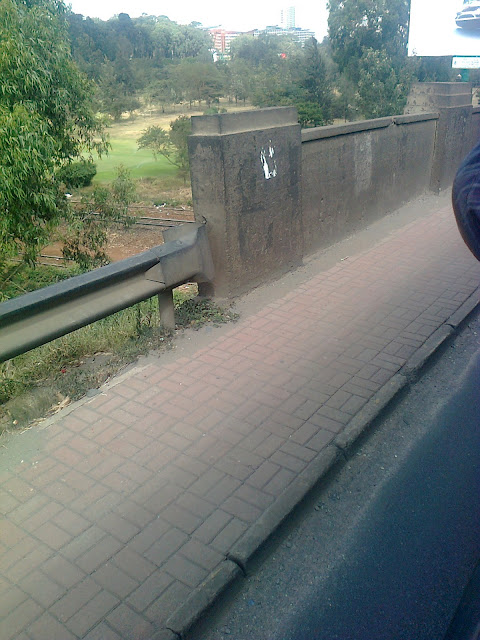Interlocking Stabilised Soil Blocks-Eco-Friendly construction in Kenya.

The use of Interlocking Stabilized Soil Blocks technology is slowly increasing in Kenya.
More and more Kenyans are becoming aware of the eco-friendly, pocket –friendly method of construction and choosing it over the usual masonry stone or Mabati iron sheet walling.
The first time I came across the technology, I found it stranger than fiction that soil stabilized with some cement can form into a solid hard rock seconds after compression . It sounded more like magic. The soil block when submerged into a bucket of water overnight together with a masonry stone and then lifted shoulder high and left to fall freely, will still not break. However, strange enough, the masonry stone will break into two after the same fall.
I have been in the construction industry for over 10 years but still fund this technology hard to believe. For laymen, it’s even harder to imaging that soil can be compressed to create a block just as hard as stone.
Thika Super Highway.
The recently completed Thika road is also based on Stabilized soil block technology. This is based on the American Standard as opposed to the usual British Standard of roads we are used to in Kenya where the base is made of several layers of compacted hardcore. In Thika road, the base is made of Stabilized Soil as opposed to hardcore. This is the method that the world is working towards since its better and more cost-effective.
Good to tame spiraling Inflation in Kenya.

Currently, the current rate of inflation in Kenya is 18%. This has resulted in bank interest rates being higher than 18% and in some cases as high as 30%. Kenya spends approximately 30% of its foreign exchange on oil importation. To prevent this inflation from going higher, the Ministry of Finance/Trade should work out policies that prohibit importation of construction material such as steel/Mabati/cement so that Kenyans can be pushed to think outside the box and utilize solutions available such as use of Interlocking Stabilized Soil Blocks and efficient house design such as Diamond designs.
https://www.a4architect.com/diamond-house-plan-cost/
Advantages.
Aesthetic appeal.
Interlocking Stabilised Soil blocks are aesthetically appealing. They bring out a rustic natural appearance to the house walling. The type of soil determines the eventual wall colour.
White bricks.
 |
| From February 17, 2012 |
Whitish soil can be used to produce whitish coloured bricks while reddish soil can be used to produce reddish colured bricks.
Red bricks.
 |
| From February 17, 2012 |
These can be mixed together to form a particular pattern depending on the house owner’s taste.
Cost.
The cost of constructing using Stabilized Soil blocks is lower than costs associated with using iron sheets for walling. Gauge 30 iron sheet costs KES 400 per m2 plus timber support structure at KES 300 per m2= KES 700 per m2.
Masonry stone walling takes 13 stones per m2, each stone costing KES 50=KES 650. Add joining mortar @ KES 200 per m2=KES 850
https://www.a4architect.com/topic/timber-steel-prices-in-kenya-2012/
Contractors who build the stabilized soil blocks construct at an average of KES 500 per m2.
Someone can opt to hire the block making machine and if their land already has the soil, use a cost of between KES 250 to KES 400 per m2. This marks over 100% savings compared to Mabati iron sheet or Stone walling. Strange enough, Mabati waling cost is nearly the same as stone walling when all costs are carefully calculated and added up.
Eco-friendliness.
Interlocking Stabilized soil blocks saved the environment from degradation. The manufacture of Mabati iron sheet roofing costs a lot of addition to the carbon footprint into the environment. Stone quarries also degrade the environment and a lot of diesel fuel is used by the stone cutting machines and transport Lorries as opposed to Interlocking stabilized soil blocks which can be constructed at site if the soil is favorable.
Types of Stabilized Soil blocks.
There are hand-made soil blocks and diesel-powered soil pressing machines.
The quality of the soil blocks depend on how careful the soil pressing is done and how careful the soil quality is analyzed so as to enable proper cement mixture.
Soil is tested for slumping ratio then the results are used to determine the ratio of cement into the soil depending on the soil type.
Architectural designs.
Architectural designs should also be customized to enable for Interlocking Stabilized soil block use. The Diamond house type range https://www.a4architect.com/diamond-house-plan-cost/
has been customized to enable use of the soil blocks.
The foundation is lighter hence less expensive.
Diamond House Foundation.
The picture below is an example of how the Diamond House foundation works
 |
| From February 17, 2012 |
 |
| From February 17, 2012 |
The roof is also lighter and designed to avoid the ‘Bernoulli effect’ due to wind pressure hence the building will last longer without any cracks due to roof forces.
Francis Gichuhi Kamau, Architect.
info@a4architect.com
+254721410684
/a/a


Leave a Reply